About This Orbit: Raven Wilkinson

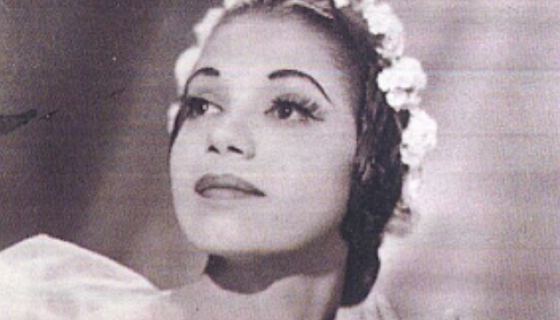
Anne Raven Wilkinson was born in New York City on February 2, 1935 to Anne James Wilkinson and Dr. Frost Bernie Wilkinson, a dentist. Her family, which also included younger brother Frost Bernie Wilkinson Jr., lived in a middle-class neighborhood in Harlem. Wilkinson had been a fan of ballet since the age of five. On her ninth birthday an uncle gave her the gift of ballet lessons to the Swoboda School (later known as the Ballet Russe School), where she studied under the direction of well-known dancers from Russia’s Bolshoi Theatre. She later transferred to the Professional Children’s School in the Bronx where she continued her training, remaining there through her last two years of high school. Madame Ludmilla Shollar, formerly associated with the St. Petersburg Imperial Russian Ballet, also gave Wilkinson private classes in technique. Seeking to become a professional dancer, Wilkinson first auditioned for a position with the Ballet Russe de Monte Carlo in 1954. Twice she was rejected but Wilkinson persevered.
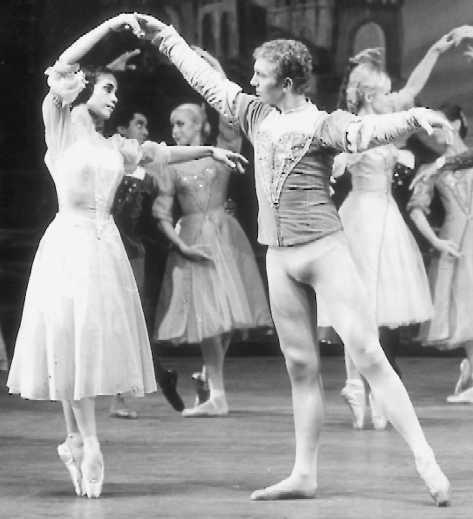
On her third try, Sergei Denham, the company’s director, informed her that she would be accepted into the company. In August 1955 at the age of 20, Wilkinson became the first African American woman to receive a contract to dance full time with a major ballet company, the Ballet Russe de Monte Carlo in New York City, New York. After two years as a member of the corps de ballet, Wilkinson started dancing solo roles but was never officially bestowed the prestigious title of soloist.
In 1961 Wilkinson left Ballet Russe and in the years that followed and danced for smaller companies. For seven months in 1963 Wilkinson, a devout Catholic, joined a convent in Fond du Lac, Wisconsin. In 1967, Wilkinson got a soloist contract with the Dutch National Ballet, where she stayed for seven years. In 1973 Wilkinson returned to the United States where, between 1974 and 1985, she performed with the New York City Opera as an extra dancer and worked as a ballet instructor at the Harlem School of the Arts.
Source:

Victoria Beller Smith
Victoria Beller Smith is a childhood friend of Raven Wilkinson. As a native New Yorker, Smith met Wilkinson in middle school and attended Ethical Culture’s Fieldston Campus School (located in Riverdale, the Bronx) together before Wilkinson transferred to Professional Children’s School due to an increased focus on the performing arts. At this school, they were required to take modern dance classes. Smith began her training at Ballet Arts, performed with the Grand Ballet du Marquis de Cuevas Company for two years, and with the American Festival Ballet (a Europe-based American company). Smith shared that Wilkinson was “gracious” and has a “wonderful intelligence,” a glass-half-full attitude, and the ability to find the positive amidst challenges which was most likely helpful as she endured many challenges as a Black ballerina.
Source:
Maria and Vecheslev Swoboda
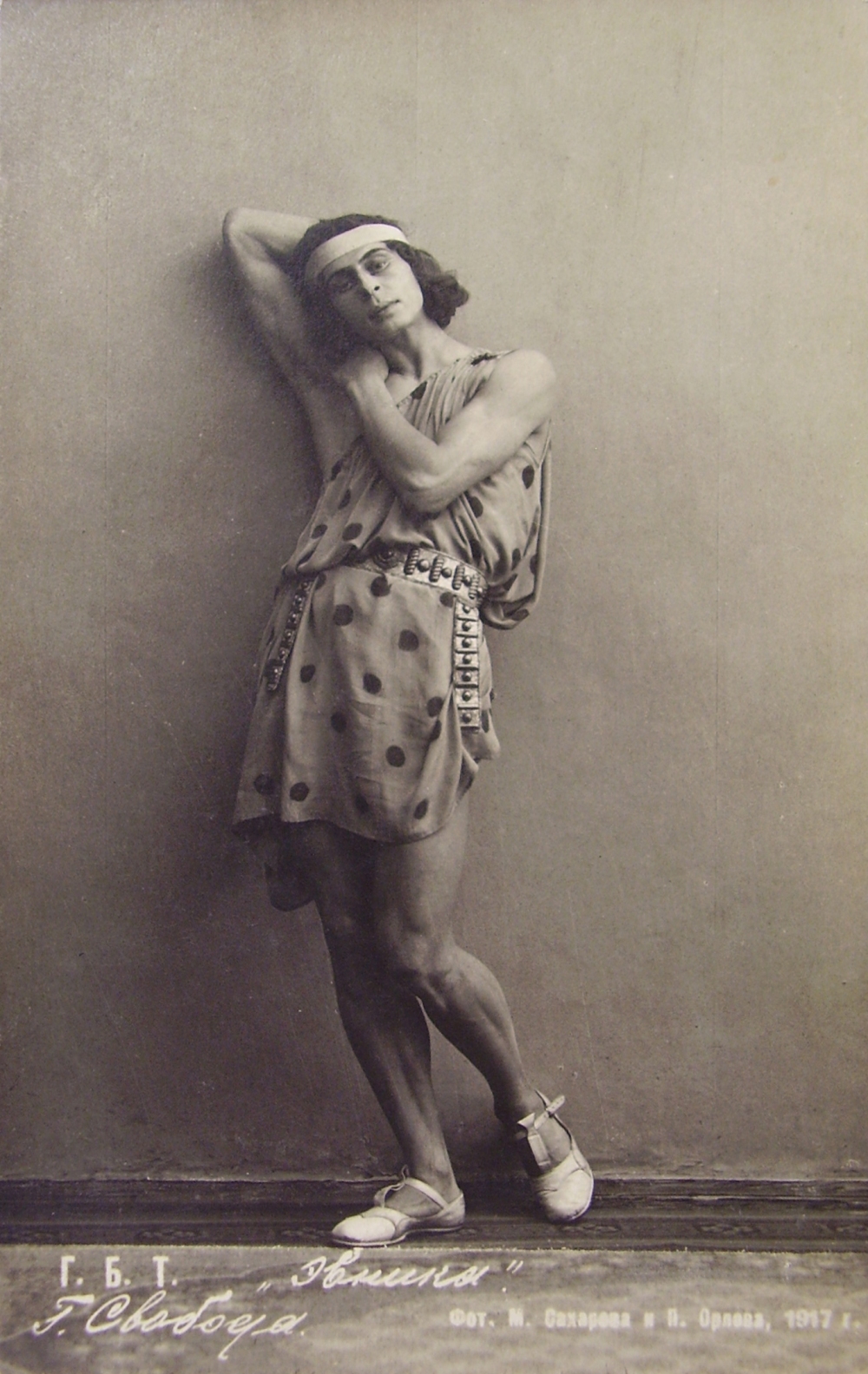
On Raven Wilkinson’s 9th birthday, she was given ballet classes as a gift at the Swoboda Dance School, owned and run by Vecheslav and Maria Swoboda. The couple was originally from Moscow and danced with the Moscow Bolshoi Theatre. Maria Swoboda had taught at many different companies including the Ballet Russe de Monte Carlo, the American Ballet Theatre School, and the Swoboda School, later known as the Ballet Russe School. The Ballet Russe de Monte Carlo organization eventually bought the Swoboda Cchool in 1951, presenting an opportunity for Wilkinson to audition.
Regarding her first instructors, Wilkinson says, “My teacher was Madame Maria Swoboda who was a real Russian ballet teacher-beautiful woman [said with an accent]. She had been a ballerina. I was completely taken with this person. She was fascinating to me…my first lesson…she held my hand and looked at me and said, ‘Are you French,’ and I went [Ms. Wilkinson shook her head no]. ‘Are you Spanish,’ and I went [again indicating no] and I guess she didn’t know what else to ask so she just went on.”
Wilkinson initially started her training at the Swoboda School in the middle of the year through private lessons due to her birthday falling in the middle of the school year. Wilkinson was the only Black dancer during her time at the Swoboda School. There had been another Black dancer before Wilkinson’s time that was taught privately because of her Blackness and the fear of repercussions of having a Black dancer in the general population.
Sources:
Raven Wilkinson Obituary, The New York Times
Black Ballerinas Dancing on the Edge: An Analysis of the Cultural Politics in Delores Browne’s and Raven Wilkinson’s Careers, Joselli Deans
Maria Swoboda Obituary, The New York Times
Photo: Color by Klimbim
Ballet Russe de Monte Carlo
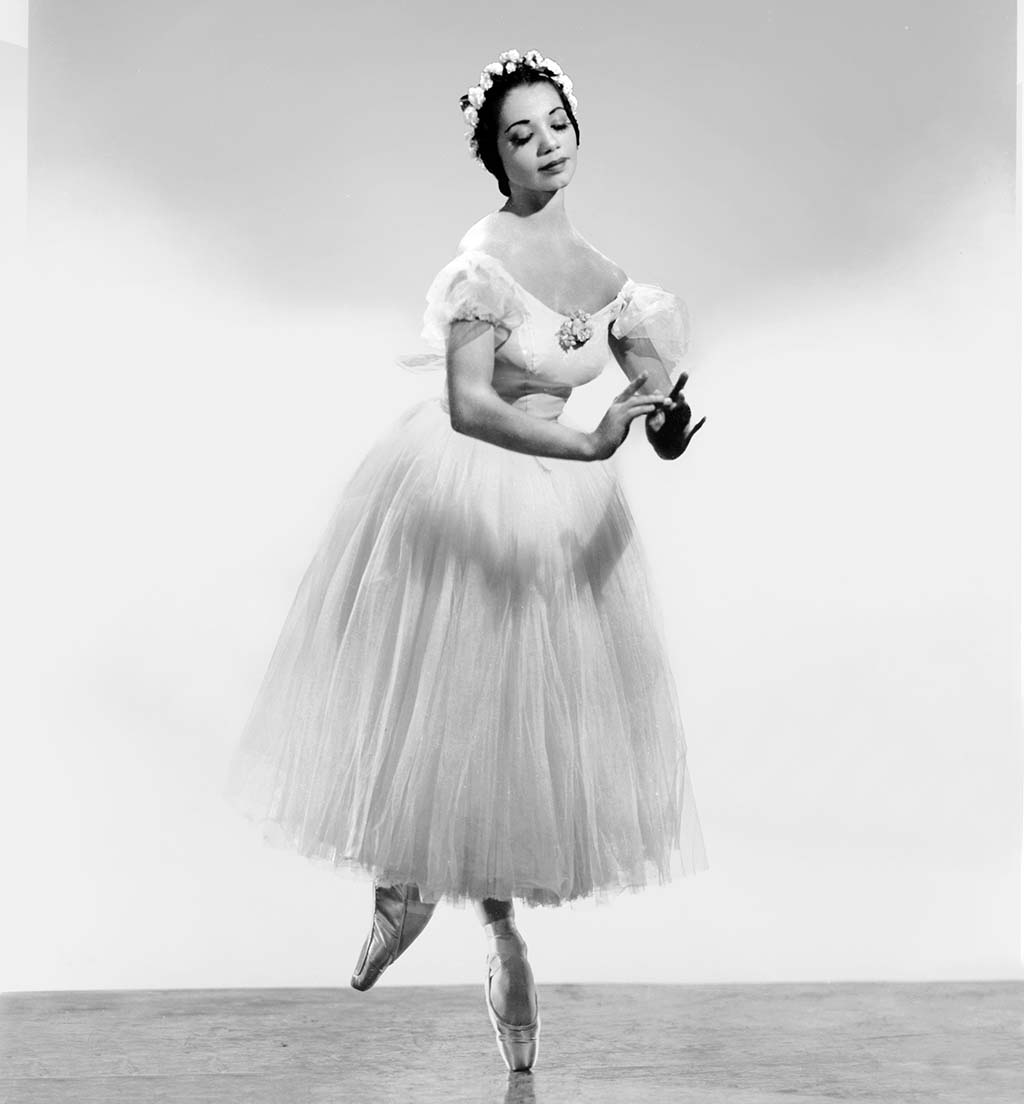
In March of 1954, the Swoboda School was bought by the Ballet Russe de Monte Carlo organization. Before this acquisition, several Ballet Russe dancers had already taken classes at the Swoboda School, and the school had even been the site for Ballet Russe auditions. Because of this unique relationship, many talented students were expected to audition and potentially join the Ballet Russe de Monte Carlo.
On Raven Wilkinson’s third audition after auditioning twice with no success, she recalls, “Someone who worked in the administration of the school, and was a friend, came and told me not to go to the audition because they were sure or they heard officially that I was not going to be taken because they couldn’t afford to take someone of my racial background traveling as they do in the South. So, in one sense I felt very devastated but in another sense, of course, you always know this; it’s traveling with you all your life. So I was determined to keep trying, not to fold in from one source saying that. And it wasn’t just Ballet Russe; I was going to try everywhere. But that’s what made me realize, ‘I’m going to try and I am not going to give up.’ And I am going to keep on knocking at that door even if—some people would consider it battering your head against the wall no I was going to keep on. So I did.” The next day after her third audition, the director of Ballet Russe de Monte Carlo, Sergei Denham, told her she was accepted into the company.
Wilkinson’s tenure at Ballet Russe de Monte Carlo was filled with many experiences, both positive and negative (with regard to racism). Sometime after 1957, while Ballet Russe de Monte Carlo was driving to Montgomery, Alabama, the dancers saw a Ku Klux Klan rally happening on the side of the road that was in association with a greater convention being held in the city. A klansmen ran onto the bus throwing leaflets. Wilkinson describes the incident, “I remember one time in Montgomery, Alabama, the tour bus rolled into town, and everyone was running around with white robes and hoods on. They stopped traffic, there were so many of them. There was a rapping sound on the bus door, and this man jumped on in his hood and gown. Several big strapping male company dancers got up and moved toward him. He threw a fistful of racist pamphlets all over the bus before they chased him out. That afternoon, when we got to our hotel in Montgomery, a bunch of us went down to the dining room for dinner. When we walked in, it was full of lovely couples, families with little children—a wonderful family atmosphere. Then, as I pulled out my chair, I realized that they all had Ku Klux Klan robes on the seats next to them. I remember thinking, here are people who can be so cruel and ugly, and yet they’re so loving toward their own families. In a way it made me less frightened of them. They lost some of their power in my eyes.” Wilkinson eventually was physically exhausted from touring and many serious incidents that had taken place and ended up leaving the company in late 1960.
Sources:
Black Ballerinas Dancing on the Edge: An Analysis of the Cultural Politics in Delores Browne’s and Raven Wilkinson’s Careers, Joselli Deans
Raven Wilkinson’s Extraordinary Life: An Exclusive Interview, Pointe Magazine
Photo: Anne Raven Wilkinson, Black Past
Sergei Denham
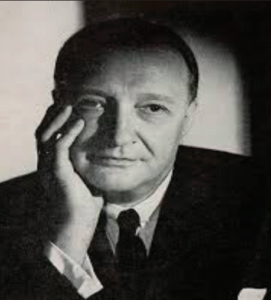 In 1938, Sergei Denham established and directed the Ballet Russe de Monte Carlo in New York City due to World War II. Under Denham, the Ballet Russe de Monte Carlo bought the Swoboda School, where Raven Wilkinson trained. Denham allowed Wilkinson to dance with the company but did not want her to explicitly state her Blackness, as this could create controversy and further problems. After a series of long tours, Wilkinson was physically exhausted and burnt out from the touring and racism she had experienced (having to stay in “colored” hotels, the KKK incident for two examples) and decided to leave the company. Denham tried to get her to stay, but she insisted she leave and move on to her next endeavor. When Raven Wilkinson later tried to go back to Ballet Russe de Monte Carlo after struggling to find a full-time dancing job, she asked Denham to take her back into the studio, which he declined.
In 1938, Sergei Denham established and directed the Ballet Russe de Monte Carlo in New York City due to World War II. Under Denham, the Ballet Russe de Monte Carlo bought the Swoboda School, where Raven Wilkinson trained. Denham allowed Wilkinson to dance with the company but did not want her to explicitly state her Blackness, as this could create controversy and further problems. After a series of long tours, Wilkinson was physically exhausted and burnt out from the touring and racism she had experienced (having to stay in “colored” hotels, the KKK incident for two examples) and decided to leave the company. Denham tried to get her to stay, but she insisted she leave and move on to her next endeavor. When Raven Wilkinson later tried to go back to Ballet Russe de Monte Carlo after struggling to find a full-time dancing job, she asked Denham to take her back into the studio, which he declined.
Sources:
Black Ballerinas Dancing on the Edge: An Analysis of the Cultural Politics in Delores Browne’s and Raven Wilkinson’s Careers, Joselli Deans
Photo: Tacoma City Ballet Library, The History of Ballet Russes
Frederic Franklin
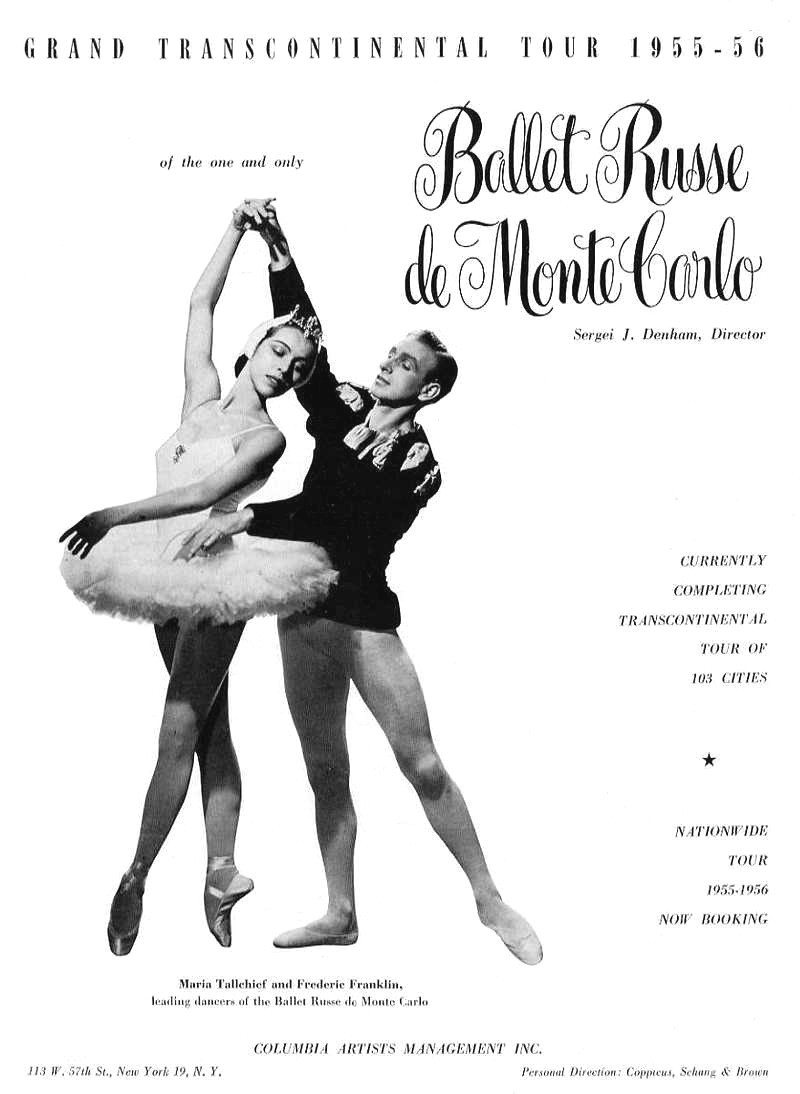
Frederic Franklin was a member of Ballet Russe de Monte Carlo from 1938 to 1952. Franklin gave the audition for Wilkinson’s Ballet Russe class and had previously worked as a faculty member at the Swoboda School. Franklin said that he pushed the company leadership of Ballet Russe de Monte Carlo to accept Wilkinson into the company.
Sources:
Black Ballerinas Dancing on the Edge: An Analysis of the Cultural Politics in Delores Browne’s and Raven Wilkinson’s Careers, Joselli Deans
Photo: Frederic Franklin, Wikipedia
Eleanor D’Antuono
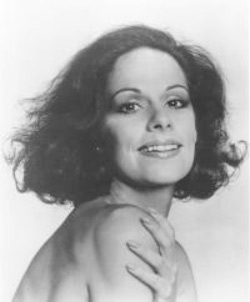 Eleanor D’Antuono was a friend and roommate on the road of Raven Wilkinson while dancing for Ballet Russe of Monte Carlo. The pair would attend church together. D’Antuono witnessed Wilkinson being told she couldn’t stay in the same hotel and tried to go with her to the “Negro” hotel, but was told she could not due to laws prohibiting this. Wilkinson felt that D’Antuono was incredibly protective of her.
Eleanor D’Antuono was a friend and roommate on the road of Raven Wilkinson while dancing for Ballet Russe of Monte Carlo. The pair would attend church together. D’Antuono witnessed Wilkinson being told she couldn’t stay in the same hotel and tried to go with her to the “Negro” hotel, but was told she could not due to laws prohibiting this. Wilkinson felt that D’Antuono was incredibly protective of her.
Sources:
Raven Wilkinson’s Extraordinary Life: An Exclusive Interview, Pointe Magazine
Black Ballerinas Dancing on the Edge: An Analysis of the Cultural Politics in Delores Browne’s and Raven Wilkinson’s Careers, Joselli Deans
Alicia Alonso
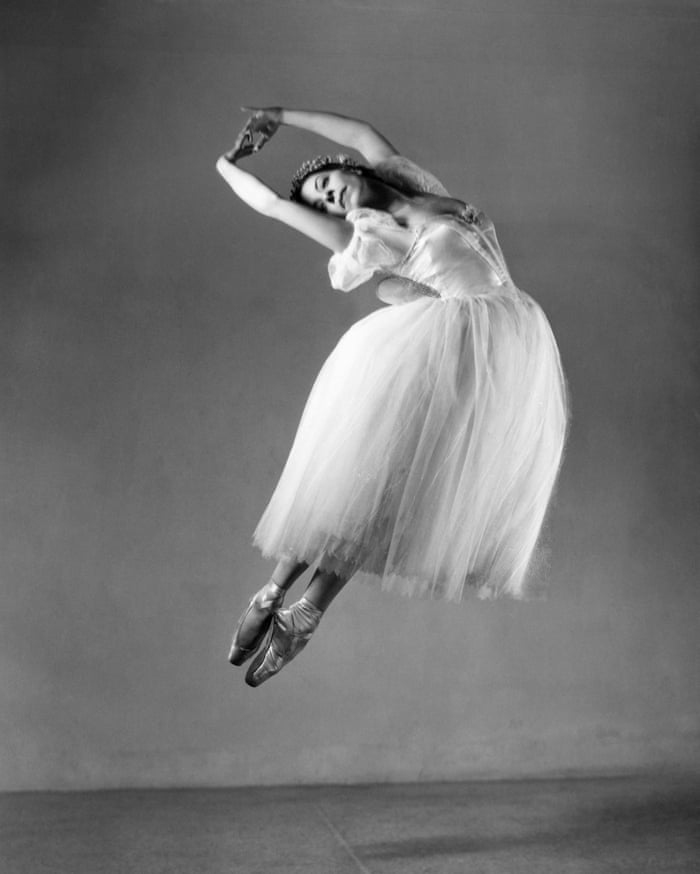 Alicia Alonso was a guest artist with the Ballet Russe de Monte Carlo at the time Raven Wilkinson was in the company. Alonso had an olive complexion and after performing with the company, sent Wilkinson a bottle of clown-white makeup (through the assistant wardrobe mistress as a messenger) in order to achieve the “white ballet” look. Wilkinson felt that Alonso was trying to share her own experiences and personal tricks while using the messenger to make the situation less awkward. Wilkinson admired Alonso’s dancing, particularly her ability to use her head while dancing.
Alicia Alonso was a guest artist with the Ballet Russe de Monte Carlo at the time Raven Wilkinson was in the company. Alonso had an olive complexion and after performing with the company, sent Wilkinson a bottle of clown-white makeup (through the assistant wardrobe mistress as a messenger) in order to achieve the “white ballet” look. Wilkinson felt that Alonso was trying to share her own experiences and personal tricks while using the messenger to make the situation less awkward. Wilkinson admired Alonso’s dancing, particularly her ability to use her head while dancing.
Sources:
Black Ballerinas Dancing on the Edge: An Analysis of the Cultural Politics in Delores Browne’s and Raven Wilkinson’s Careers, Joselli Deans
Photo: Alicia Alonso Obituary, The Guardian
Sisters of the Holy Nativity, in Fond du Lac, Wisconsin
 Raven Wilkinson was baptized Anglican Catholic and attended a church called the Little Church Around the Corner and St. Mary the Virgin Anglican Church growing up. Even as she was touring, she would still make her best efforts to attend some type of worship service, often with her roommate and friend Eleanor D’Antuono. Prayer and meditation was an important part of her life. On tour with Ballet Russe de Monte Carlo, Wilkinson had the opportunity to visit religious communities and later decided to further investigate the convent life. Her father thought that if it was something she felt she needed to do she should do it, while her mother was not a great supporter of the idea.
Raven Wilkinson was baptized Anglican Catholic and attended a church called the Little Church Around the Corner and St. Mary the Virgin Anglican Church growing up. Even as she was touring, she would still make her best efforts to attend some type of worship service, often with her roommate and friend Eleanor D’Antuono. Prayer and meditation was an important part of her life. On tour with Ballet Russe de Monte Carlo, Wilkinson had the opportunity to visit religious communities and later decided to further investigate the convent life. Her father thought that if it was something she felt she needed to do she should do it, while her mother was not a great supporter of the idea.
Wilkinson entered the novitiate at the Sisters of the Holy Nativity, in Fond du Lac Wisconsin in the Spring of 1963 and stayed for 7 months. While there, she trained in vows of poverty, chastity, and obedience. She found obedience the most difficult component, especially as it related to dance, as they would often be required to be still. One day, some Roman Catholic nuns invited Wilkinson’s congregation to see the National Ballet of Canada. Wilkinson recognized the name of a dancer in the program and after obtaining permission only if she went just for a few minutes, went backstage to see her. Once going backstage and visiting her friend Joysanne Sidimus, she was invited to see her friend perform Don Quixote from a balcony backstage, therefore requiring her to disobey her orders to come right back. Wilkinson remembers, “I recognized that that meant I would stay backstage though the intermission and not go back. I made a decision and I am sure it was a very hard decision, not to go back and stood there and watched that pas de deux.” Wilkinson also recalls the vital life lesson saying, “It made me realize I wanted to dance more than anything in the world, I always had and probably always would.” Being in the convent allowed Wilkinson to better understand her calling in relation to God, expressing, “I realized what a vocation I had and how you had to be so sincerely and totally devoted in what you were doing as an artist or dancer. I realized that therein, if you want to glorify God, the greatest place is in the gifts He gives you.”
Sources:
Black Ballerinas Dancing on the Edge: An Analysis of the Cultural Politics in Delores Browne’s and Raven Wilkinson’s Careers, Joselli Deans
Photo: Wisconsin Historical Society
The Capitol Ballet
After leaving the convent in Fond du Lac, Wisconsin, Wilkinson returned to New York and struggled to find a company that would accept her. In this time period, Wilkinson performed a duet with Sylvester Campbell entitled Flower Festival in Genzano, by Danish choreographer August Bournonville in a guest appearance with the Capitol Ballet in Washington. Virginia Johnson clearly remembers Wilkinson’s exquisite performance and technique and that Wilkinson was the first Black ballerina she had ever seen. Johnson recalls, “These two women, Claire Jones and Doris Hayward brought Raven Wilkinson to Washington to perform with their company because she was an exquisite ballerina, who had a big career in Europe but was not able to have a career in America. And I remember very vividly standing in the wings, watching her perform, saw [Flower Festival in Genzano]…and being in such a state of awe, but in such a state of joy that she was there and I could be like her.”
Sources:
CBC Radio Show
Stillness Broken Documentary
Oleg Briansky
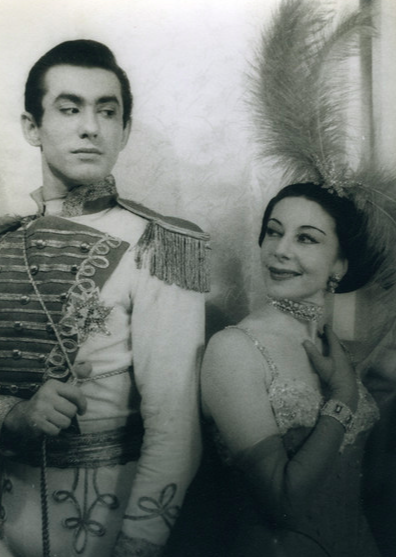
Oleg Briansky formed a company, The Briansky Company, in order to participate in a Title III program, a program with the purpose to expose Americans to the arts to gain support for government-subsidized programs. Wilkinson, along with Yvonne McDowell from Joffrey II and Charles Neal of the New York Negro Ballet went to audition together, and only Wilkinson was hired in 1964. The Briansky Company performed material such as lecture demonstrations and pas de deux and often appeared in schools, museums, and community centers. When visiting a new location, they were often hosted in the homes of community locals.
Sources:
Black Ballerinas Dancing on the Edge: An Analysis of the Cultural Politics in Delores Browne’s and Raven Wilkinson’s Careers, Joselli Deans
Photo: Marquette University Archives
Sylvester Campbell
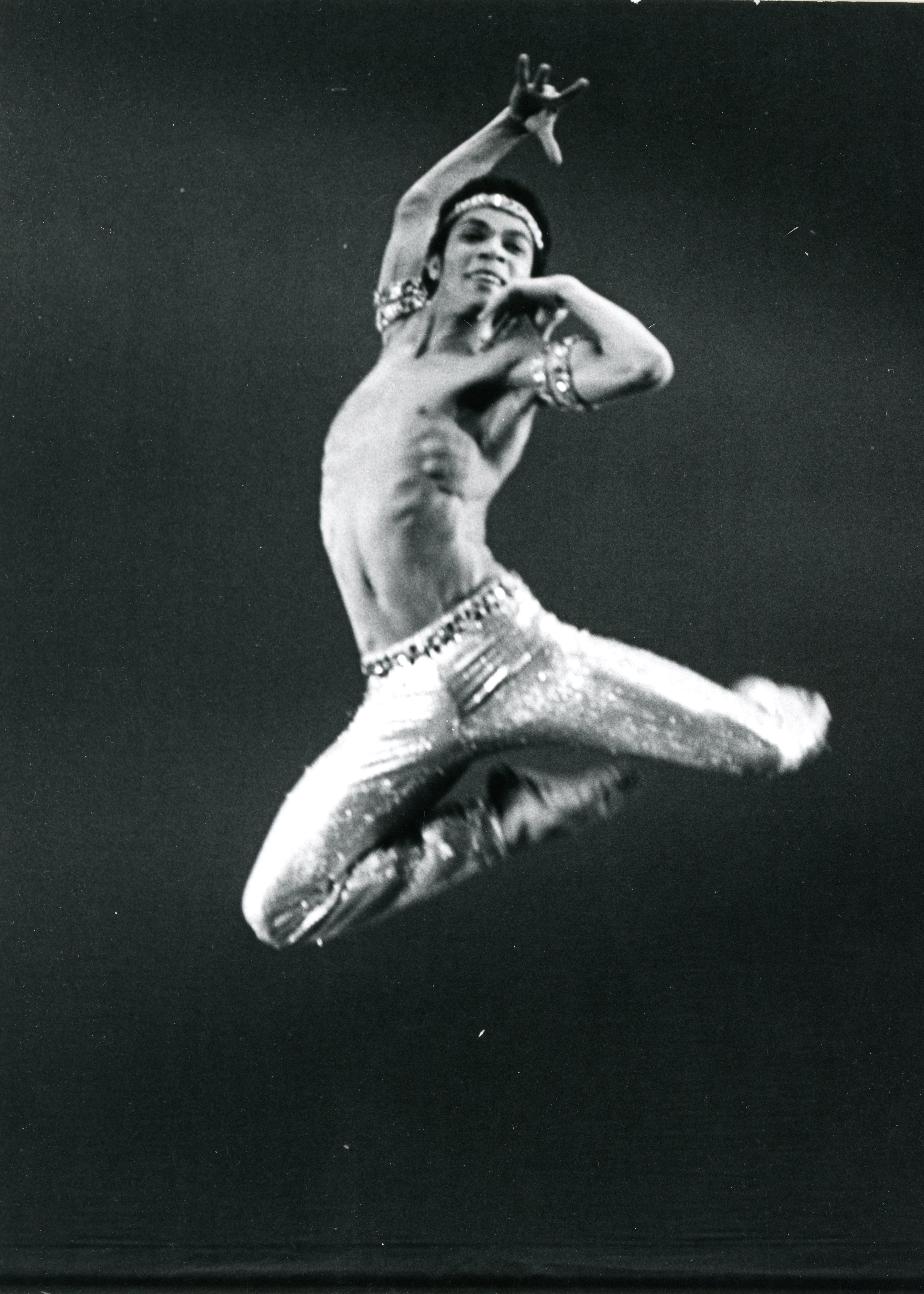 Sylvester Campbell had a twelve-year career with Dutch National Ballet, achieving principal dancer status. Campbell asked Wilkinson if she was interested in coming to Holland and suggested that Wilkinson look into dancing with the company.
Sylvester Campbell had a twelve-year career with Dutch National Ballet, achieving principal dancer status. Campbell asked Wilkinson if she was interested in coming to Holland and suggested that Wilkinson look into dancing with the company.
Campbell first called Wilkinson, asking her to guest star with him in Pas de deux Romantique at a concert given by the Capitol Ballet. Wilkinson shared she had taken a break from dancing and had left the covenant, and Campbell told her he would later ask her again. In 1966 he once again asked Wilkinson to join him, and they later met in a studio at Jones-Haywood School of Ballet to rehearse that night. After the performance, Campbell told Wilkinson, “You would be a beautiful Giselle. Wouldn’t you love to do Giselle?” and asked her to consider coming to Europe and dance with the Dutch National Ballet, expressing that if she wanted to come that he could help make it happen. At that time, she was informed she was not admitted due to a lack of space. Wilkinson wrote to the artistic director, Sonia Gaskell, expressing her willingness and detailing her experience. She then received a contract.
Once at the Dutch National Ballet, Campbell requested that Wilkinson rehearse the Pas de Deux Romantique, the dance they had previously performed together. When the dancer who performed it became ill, Wilkinson was able to replace her and perform alongside Campbell. Wilkinson remembers this performance with great joy, and the performance was well-reviewed. Wilkinson and Campbell were able to dance together on a few occasions in the company.
Sources:
Black Ballerinas Dancing on the Edge: An Analysis of the Cultural Politics in Delores Browne’s and Raven Wilkinson’s Careers, Joselli Deans
Photo: 1970, MoBBallet
Dutch National Ballet
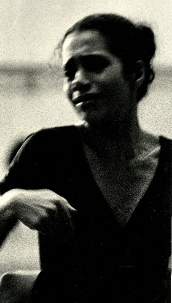 Raven Wilkinson performed with the Dutch National Ballet for six years. There were approximately 120 dancers in the company while Wilkinson danced there. The company performed both traditional and contemporary ballets. During Wilkinson’s tenure, there were a handful of Black dancers and dancers of color dancers with the company. Wilkinson performed in Firebird, Les Sylphides, Serenade, Giselle, Mozartiana, and Concerto Barocco, usually in corps de ballet roles, and feature roles in the White Cat Pas de Deux in Sleeping Beauty, and Pas de Trois and the Spanish Dance in Swan Lake, in addition to other feature roles. The company performed operas, and Wilkinson discovered this interest of hers.
Raven Wilkinson performed with the Dutch National Ballet for six years. There were approximately 120 dancers in the company while Wilkinson danced there. The company performed both traditional and contemporary ballets. During Wilkinson’s tenure, there were a handful of Black dancers and dancers of color dancers with the company. Wilkinson performed in Firebird, Les Sylphides, Serenade, Giselle, Mozartiana, and Concerto Barocco, usually in corps de ballet roles, and feature roles in the White Cat Pas de Deux in Sleeping Beauty, and Pas de Trois and the Spanish Dance in Swan Lake, in addition to other feature roles. The company performed operas, and Wilkinson discovered this interest of hers.
Source:
Robert Joffrey and Eugene Loring
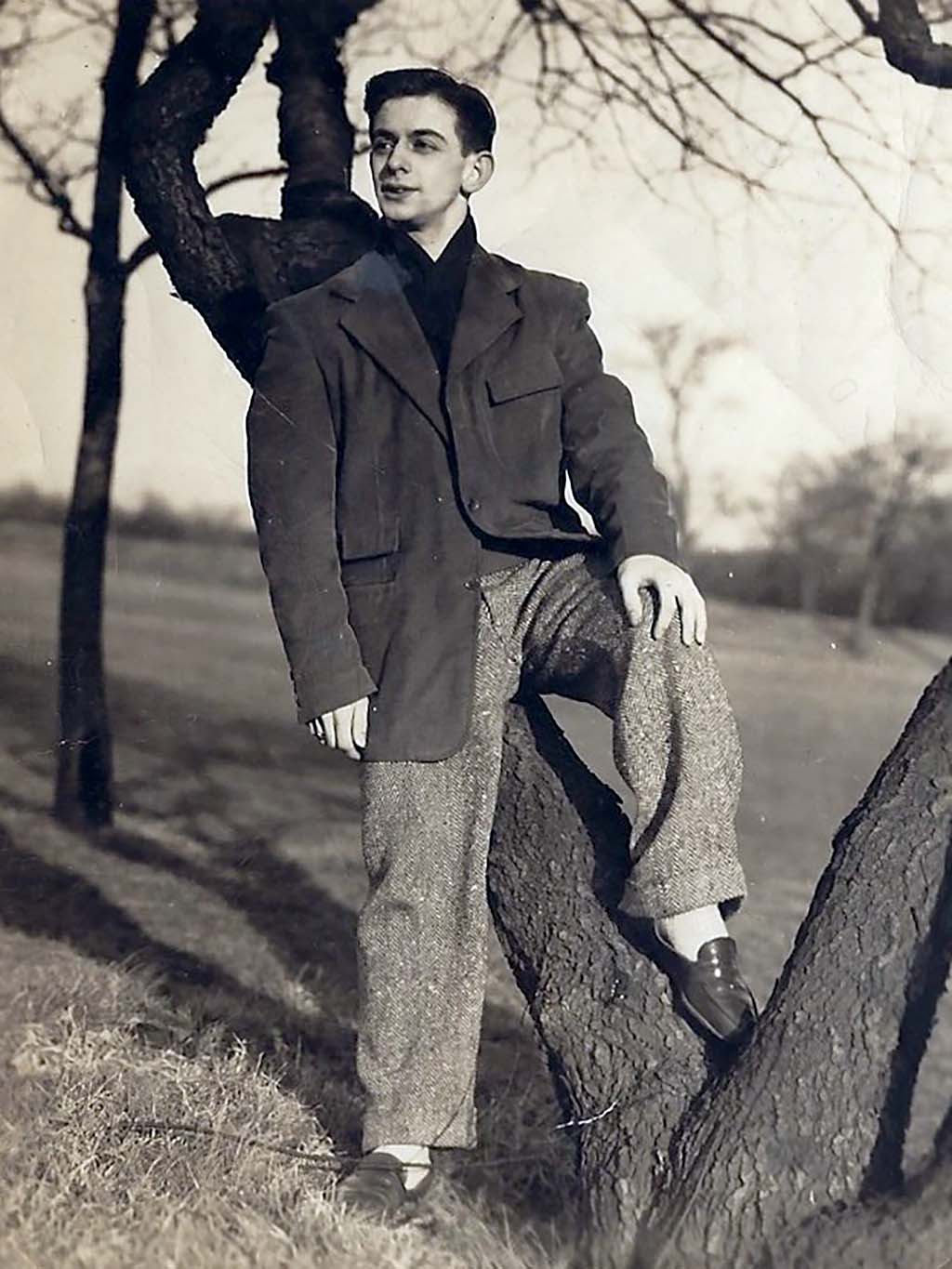
Through Raven Wilkinson’s former Ballet Russe de Monte Carlo colleague, Rochelle Zide, who was currently working at the Joffrey Ballet, Wilkinson learned that Robert Joffrey wanted to speak with her about a “perfect role” for her. Joffrey knew of Wilkinson from watching her performances at Ballet Russe de Monte Carlo. The two met, and Wilkinson learned the role was the mother of Andrew Goodman in These Three, which Eugene Loring designed for the company. This ballet was based on the murder of Andrew Goodman and two white civil workers, and Raven Wilkinson quickly detected her Blackness as a main reason for him wanting her to do this role. Wilkinson did not feel like she would fit into this motherly role but did give the role a try. Loring watched Wilkinson in class and then further inquired about her modern dancing skills. Wilkinson shared she does not have a modern dance education, but was met with further insistence that she try. Wilkinson was frustrated by this, as she was not being respected as a classical dancer. Wilkinson later received a call from Joffrey, saying they were not sure of her place in the piece. Raven Wilkinson responded and the following dialogue ensued:
“‘Mr. Joffrey, you said you didn’t want a dancer superimposed on the company. Does this mean that I’d be taken in your company and be one of your dancers?’ When I said that he said, ‘I don’t know, I don’t know about that now.’ Everything was very cloudy or negative. So then I said, ‘The only reason I ask is because I have the opportunity to go to Europe—to Holland and dance, and I just wanted to know where this was progressing. I was very surprised when he– well, took exception is putting it mildly. He almost banged his hand on the desk and said, ‘Why are all you dancers going to Europe?’ meaning Black dancers. ‘This is your home.’ And I was shocked and I looked at him and felt like saying ‘Just for this reason.’ I did say, ‘Because we have no place else to work and to dance and that’s why.’ I don’t think I ever heard about These Three, so it was just left alone because I think he realized I had an opportunity to go on, and maybe he did not want to say we decided not to use you. I can’t remember ever finishing that up with him.”
Sources:
Black Ballerinas Dancing on the Edge: An Analysis of the Cultural Politics in Delores Browne’s and Raven Wilkinson’s Careers, Joselli Deans
Photo: Robert Joffrey, History Link
The New York City Opera
 Wilkinson had previously taken a class with Tommy Andrew, the ballet master of the New York City Opera Ballet, and in 1974 he asked her if she would perform in two operas due to a leave of absence of a dancer. Wilkinson agreed and danced La Traviata and I Puritani. Andrew continued to find roles for her, and she was an extra company dancer who was often called in. Wilkinson performed in every opera that had a dancing component. She danced until 1985 when she retired from dancing at 50. This, however, was not the end of her time at the opera. She regularly filled in smaller acting roles, and eventually, the business manager of the opera asked her to fill in a more regular role due to the original actor taking a leave of absence. Wilkinson took the character mime role, which ended up being permanent.
Wilkinson had previously taken a class with Tommy Andrew, the ballet master of the New York City Opera Ballet, and in 1974 he asked her if she would perform in two operas due to a leave of absence of a dancer. Wilkinson agreed and danced La Traviata and I Puritani. Andrew continued to find roles for her, and she was an extra company dancer who was often called in. Wilkinson performed in every opera that had a dancing component. She danced until 1985 when she retired from dancing at 50. This, however, was not the end of her time at the opera. She regularly filled in smaller acting roles, and eventually, the business manager of the opera asked her to fill in a more regular role due to the original actor taking a leave of absence. Wilkinson took the character mime role, which ended up being permanent.
Sources:
Black Ballerinas Dancing on the Edge: An Analysis of the Cultural Politics in Delores Browne’s and Raven Wilkinson’s Careers, Joselli Deans
Photo: Review/Opera; A Little Devil Who Was Too Good, New York Times
Misty Copeland

Misty Copeland learned of Raven Wilkinson while watching a documentary on the Ballet Russe de Monte Carlo. Seeing Raven Wilkinson was the first time Copeland recalls feeling a connection with another ballerina. Copeland is inspired by Wilkinson’s resilience. She identifies parallels between their experiences as Black dancers and is in awe of how Wilkinson confronted the many tribulations she endured while always remaining true to herself. Copeland’s children’s book The Firebird is inspired by Misty Copeland and Raven Wilkinson’s relationship. Raven Wilkinson was able to witness Copeland’s promotion to principal dancer with the American Ballet Theatre.
Sources:
Misty Copeland’s mentor: The courageous black ballerina who defied racism, Washington Post
Raven Wilkinson Obituary, The New York Times
Photo Credit: Gene Schiavone

Thandi Steele

